What is the classic 1950s Chevy? Most would say one of the Tri-Fives, with the 1955 perhaps being the purest iteration of the bunch, maybe in Nomad form. Others may point out that the finny ’57 had fuel injection as an available feature, so that should be Top Dog. Respectfully, I submit our Pick of the Day as the most classic of 1950s Bow Ties, this 1959 Chevrolet Impala convertible with fuel injection. It is currently listed for sale on ClassicCars.com by a dealership in Chatsworth, California. (Click the link to view the listing)
Everyone knows the story of Chevrolet and Chrysler in the 1950s, but let’s rehash it to pad my word-count: Chevrolet went from a stick-of-the-mud reputation into something else entirely for 1955. While Pontiac gets all the glory going from a car for librarians to a performance brand, Chevrolet deserves the same credit, but several years earlier. The 1955 Chevrolet reflected the best of Harley Earl’s styling studio in America’s popular, low-priced brand combined with fine engineering from Chevrolet’s modern V8, a first for the brand in over 35 years. It went from 265ci to 283ci in 1957, only to be joined in 1958 by a big-block measuring 348ci.
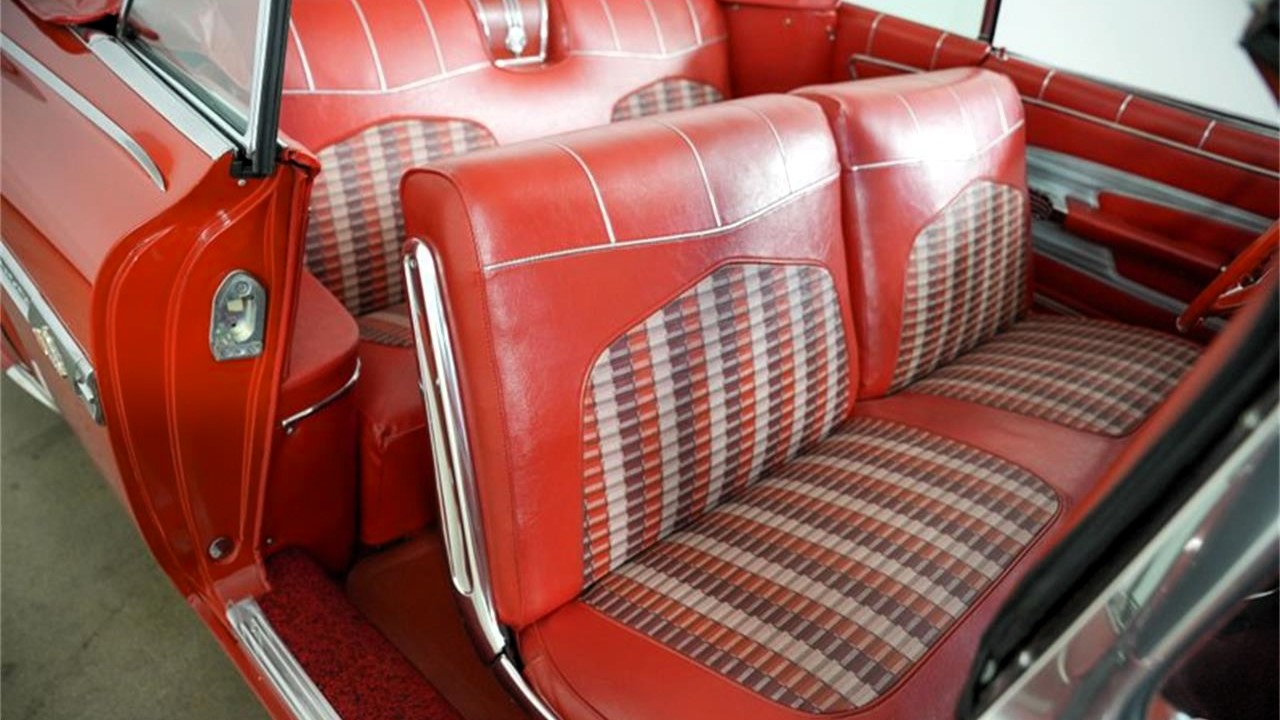
Chrysler also was a stick-in-the-mud, but corporate-wide. Its early 1950s vehicles were no style leaders, but that all changed in 1955 when Virgil Exner’s studio brought the Chrysler Corporation to contemporary status. Then Exner managed a stylistic coup with 1957’s Forward Look, which immediately made the rest of Detroit look old.
And then, General Motors came back with a vengeance for 1959. How GM was able to turn around so quickly and meet Chrysler is a story that probably can only be explained that this was GM at its peak, but Harley Earl can’t garner all the credit because his stylists had to show him the tastemaker had lost his taste. That’s why the entire 1958 series was a one-hit wonder.
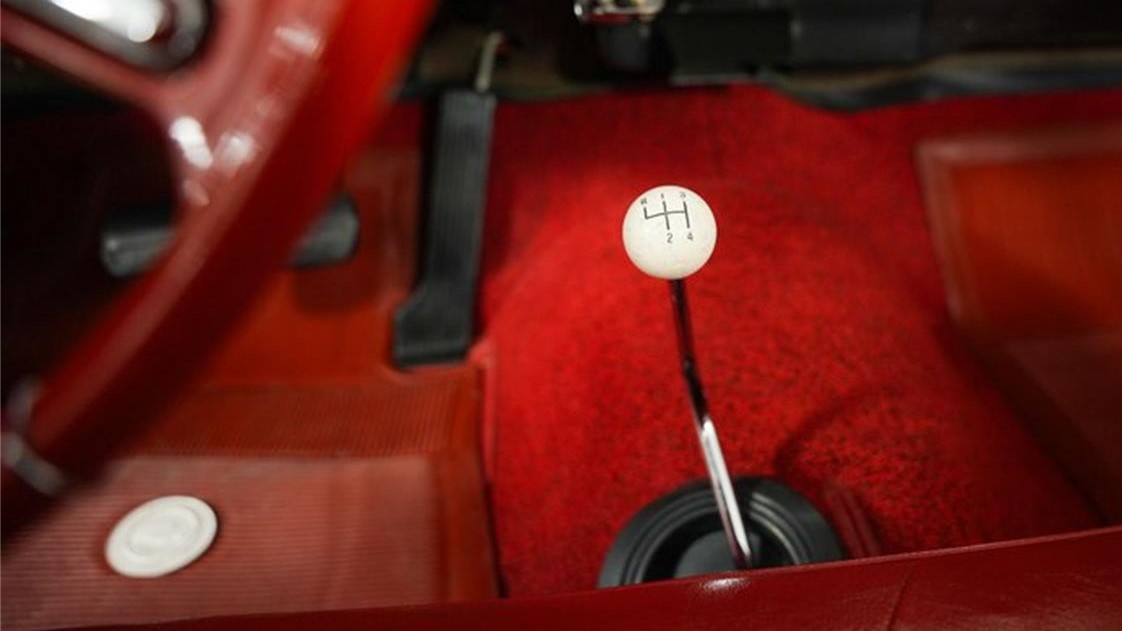
The 1959 Chevrolet resembled nothing that preceded it: a lean, sculpted cruiser whose most noticeable feature was its funky fins, trunk lid, and taillights. Up front, headlights were even with the grille, a design feature emerging at that very moment after years of high-placed headlamps. All GM cars featured variations of these stylistic elements, which were more evolved than the rehashes at Ford and Chrysler (though, admittedly, Chrysler did a decent job of trying to remain contemporary).
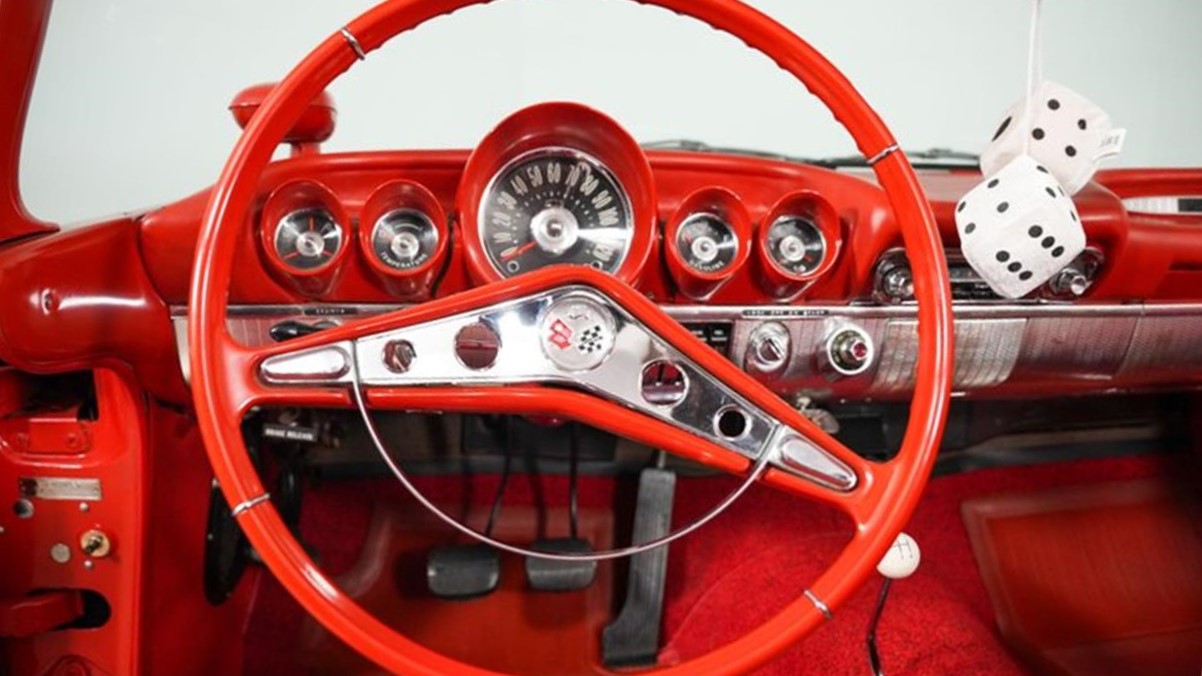
Power-wise, Chevrolet’s engine lineup was similar to 1958’s. Power as high as 335 horses was available from the 348, and a new four-speed manual was available from the factory after being introduced for dealer installation several months before. However, the most interesting engine continued to be the fuel-injected 283, now making its final appearance in Chevrolet passenger cars. The hydraulic lifter version continued to be rated at 250 horses, but the solid-lifter version received a bump to 290 horses in 1958, and that was carried over into 1959. The latter Fuelie was only available with a manual transmission.
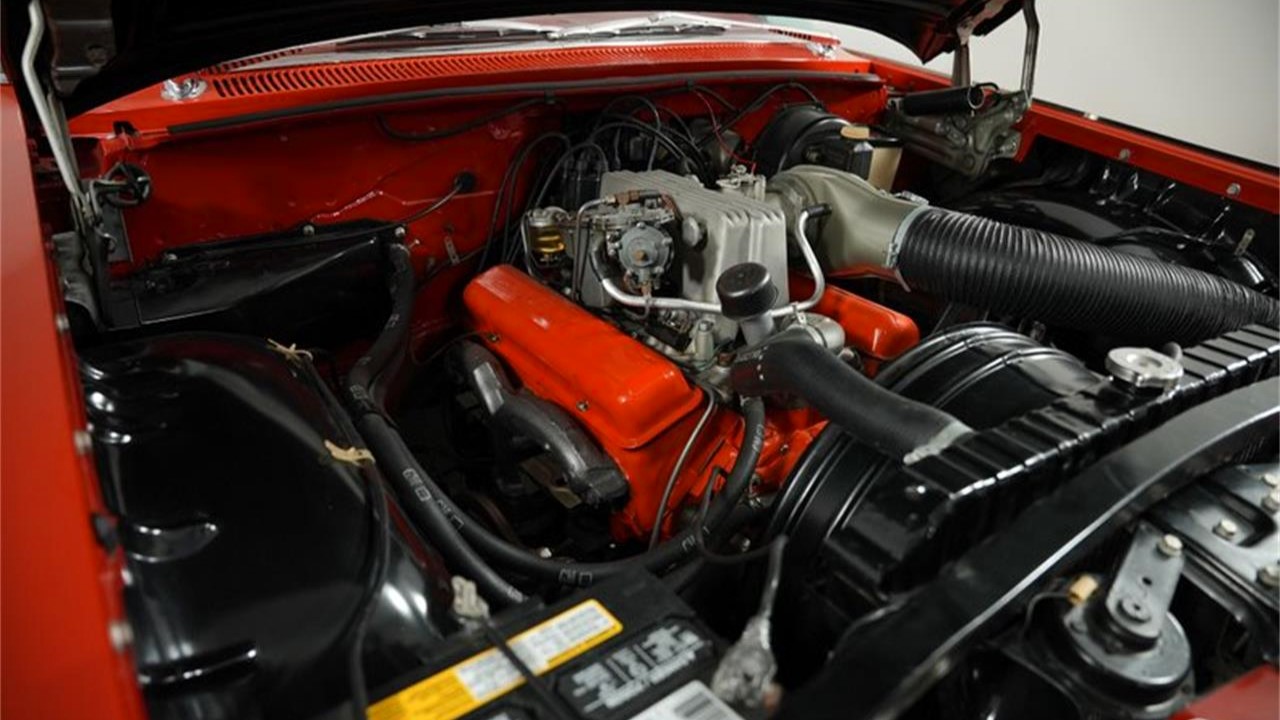
Only 173 Chevrolet passenger cars were built with fuel injection for the 1959 model year per expert Warren Leunig. Though there is no breakdown by body style, this engine never looked at home better than in something like this Roman Red Impala convertible. Yes, it’s equipped with the four-speed and high-horse small-block, making it the perfect example of Harley’s Revenge. Other features include red and white bench interior, power windows, Autronic Eye, pushbutton AM radio, Continental kit, and more.
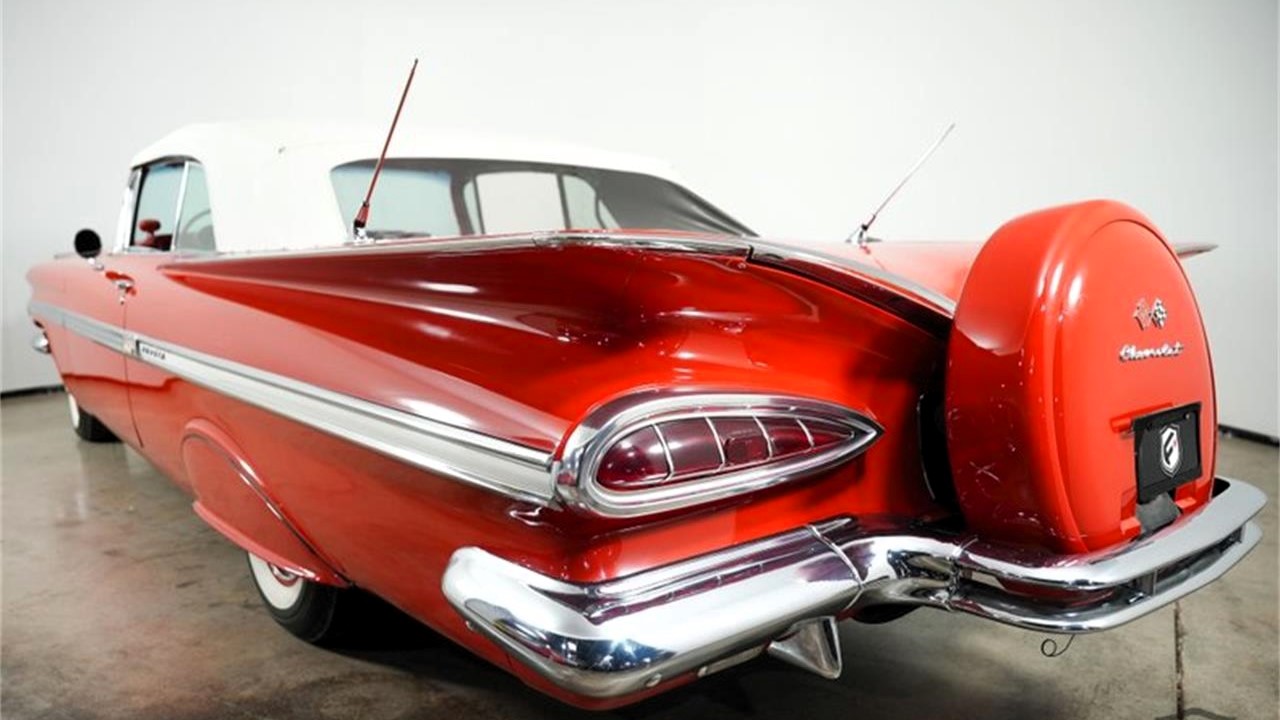
A car like this demands documentation, which this convertible cruiser doesn’t have. It was built by renowned restorer Ed Pogue, who believed it was an original Fuelie. Dig in, chat with the seller, view its history, and judge for yourself.
Click here for this ClassicCars.com Pick of the Day.


